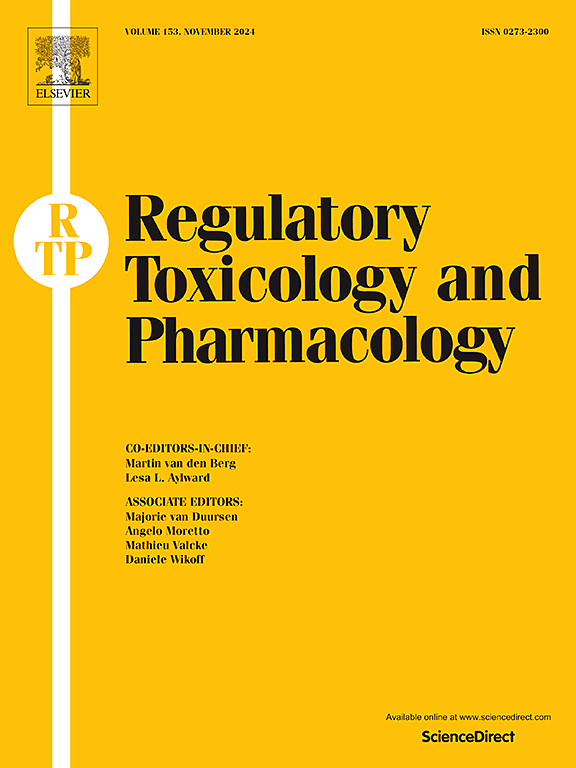药物动力学建模和模拟数据分析方面的经验和举措:巴西卫生监管局(ANVISA)的观点。
IF 3
4区 医学
Q1 MEDICINE, LEGAL
引用次数: 0
摘要
在越来越多地应用系统思维和建模与模拟(M&S)技术的推动下,药物产品开发和监管科学的格局正在发生变化,尤其是从生物制药的角度来看。在此背景下,可以通过应用质量设计(QbD)原则和 M&S,特别是通过定义临床相关溶出度规范(CRDS),实现以患者为中心的质量标准。为此,必须将体外结果与药物产品的体内性能联系起来,这强调了探索生物制药工具转化能力的必要性。基于生理学的 M&S 分析为整合药物、药物产品和目标生物体的生物特性提供了一条独特的途径,以研究它们在药代动力学反应中的相互作用。因此,基于生理学的生物药剂学建模(PBBM)在全球范围内被越来越多地用于支持药物开发和监管应用。在巴西,模型信息药物开发(MIDD)政策和战略项目尚未建立,限制了 M&S 技术的适用性。本文借鉴巴西国家药品管理局-学术界 PBBM 工作组(WG)的经验,评估了巴西药物计量学(PMx)面临的机遇和挑战,并提出了推动在监管决策中采用 M&S 分析的策略。本文章由计算机程序翻译,如有差异,请以英文原文为准。
Experiences and initiatives on pharmacokinetic modeling and simulation data analysis: Perspectives from the Brazilian Health Regulatory Agency (ANVISA)
The landscape of drug product development and regulatory sciences is evolving, driven by the increasing application of systems thinking and modeling and simulation (M&S) techniques, especially from a biopharmaceutics perspective. Patient-centric quality standards can be achieved within this context through the application of quality by design (QbD) principles and M&S, specifically by defining clinically relevant dissolution specifications (CRDS). To this end, it is essential to bridge in vitro results to drug product in vivo performance, emphasizing the need to explore the translational capacity of biopharmaceutics tools. Physiologically based M&S analyses offer a unique avenue for integrating the drug, drug product, and biological properties of a target organism to study their interactions on the pharmacokinetic response. Accordingly, Physiologically Based Biopharmaceutics Modeling (PBBM) has seen increasing use to support drug development and regulatory applications globally. In Brazil, a Model-Informed Drug Development (MIDD) policy and strategic project are not yet established, limiting applicability of M&S techniques. Drawing from the experience of the ANVISA-Academia PBBM Working Group (WG), this article assesses the opportunities and challenges for pharmacometrics (PMx) in Brazil and proposes strategies to advance the adoption of M&S analyses into regulatory decision-making.
求助全文
通过发布文献求助,成功后即可免费获取论文全文。
去求助
来源期刊
CiteScore
6.70
自引率
8.80%
发文量
147
审稿时长
58 days
期刊介绍:
Regulatory Toxicology and Pharmacology publishes peer reviewed articles that involve the generation, evaluation, and interpretation of experimental animal and human data that are of direct importance and relevance for regulatory authorities with respect to toxicological and pharmacological regulations in society. All peer-reviewed articles that are published should be devoted to improve the protection of human health and environment. Reviews and discussions are welcomed that address legal and/or regulatory decisions with respect to risk assessment and management of toxicological and pharmacological compounds on a scientific basis. It addresses an international readership of scientists, risk assessors and managers, and other professionals active in the field of human and environmental health.
Types of peer-reviewed articles published:
-Original research articles of relevance for regulatory aspects covering aspects including, but not limited to:
1.Factors influencing human sensitivity
2.Exposure science related to risk assessment
3.Alternative toxicological test methods
4.Frameworks for evaluation and integration of data in regulatory evaluations
5.Harmonization across regulatory agencies
6.Read-across methods and evaluations
-Contemporary Reviews on policy related Research issues
-Letters to the Editor
-Guest Editorials (by Invitation)

 求助内容:
求助内容: 应助结果提醒方式:
应助结果提醒方式:


